
After dropping Marianne at the airport in Broome I headed 200km up the Dampier peninsula to visit the Cape Leveque lighthouse. To my surprise and disappointment when I got there I discovered that the two local indigenous communities had closed access to the lighthouse, notwithstanding that all indications were that it was open to the public.
Fortunately the Cygnet Bay Pearl Farm and campground was close by and the manager there tried unsuccessfully to contact the community elders on my behalf. Equally fortunately I was within drone range and managed to photograph the lighthouse which fulfilled my intention to “see” every lighthouse. I also had to remind myself that while this was the objective the real purpose of my trip was to take to places around the country that I’d never been to, or even heard of in some cases, and go off the beaten track, to that extent this lighthouse met those criteria!
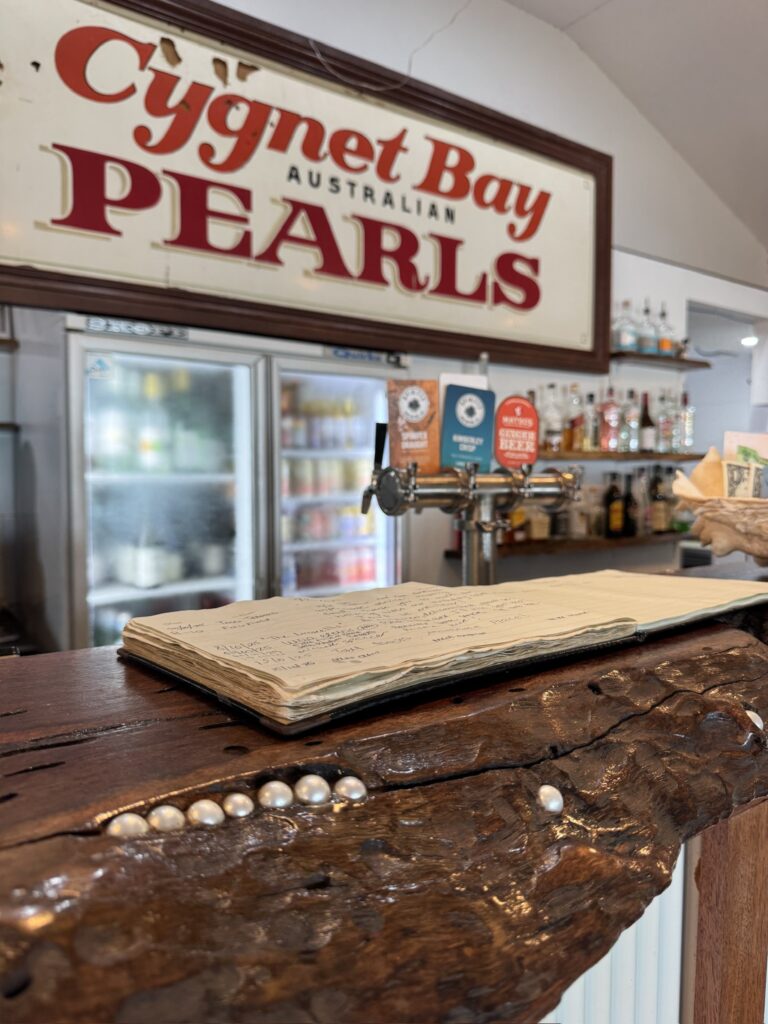
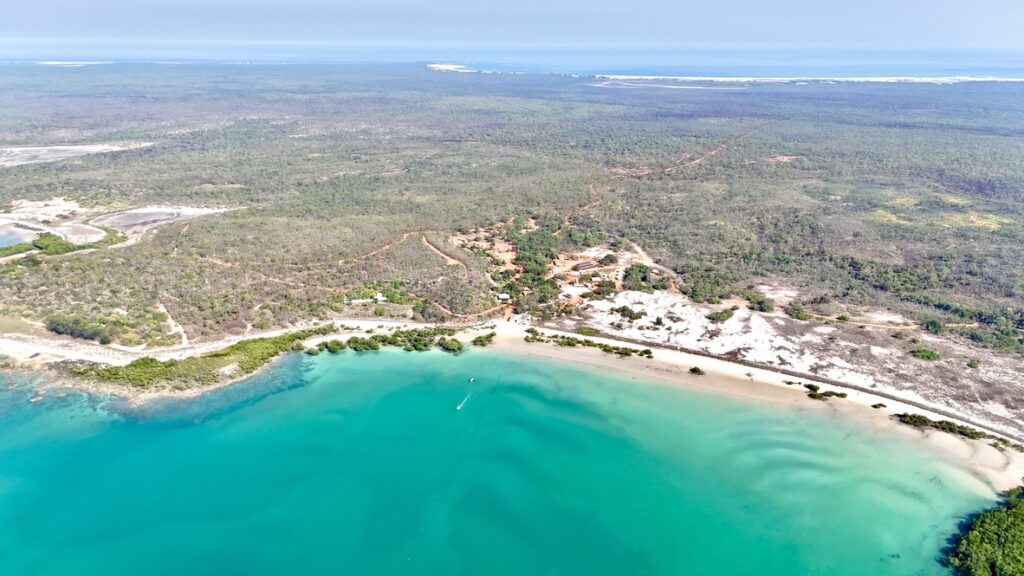
in the distance
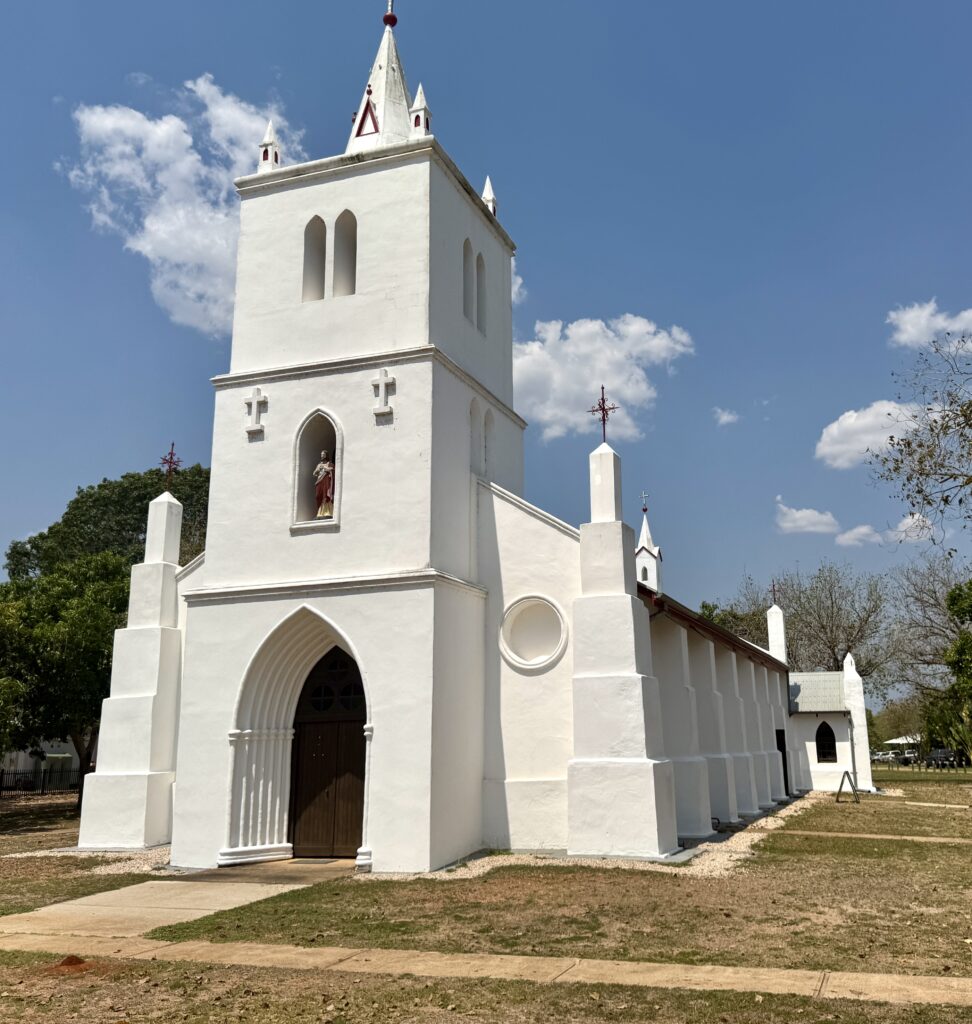

On the return trip to Broome I stopped by Beagle Bay to see the church dedicated to the missionary Fr Duncan McNab by his indigenous parishioners in 1918. Fr McNab who was born in Scotland somehow found his calling in the Australian outback and also happened to be a cousin of St. Mary MacKillop.
As arranged my cousin Richard flew into Broome to join me on my leg to Exmouth. Richard spent his formative years living in Wickham where his father, my uncle, Keith was an engineer with Cliffs Robe River (now part of Rio Tinto) in early stages of the Pilbara iron ore industry in the 1970’s. Sadly, while Richard and his brother Tony were away at boarding school in Melbourne their mother Roz drowned in the local pool which in many ways mirrored my own experience in losing my father to drowning at an early age. While the coincidence of my mother and her brother losing their partners the same way was unfortunate it did bring our families together and Richard spent a number of years living with us and is the closest thing I have to a brother. We also spent 20 years working together in building the family business which we sold in 2012 when Richard moved back to Melbourne and we haven’t seem much of each other since then. So this was a good chance to reconnect and for Richard to go back to Wickham for the first time in 44 years. Keith use to jokingly refer to Wickham as “Sin city of the North West” and now, having been there, I can now understand why. Richard was amazed at how little had changed but was equally surprised by the development of nearby Port Samson and Karratha which were almost unrecognisable to him.
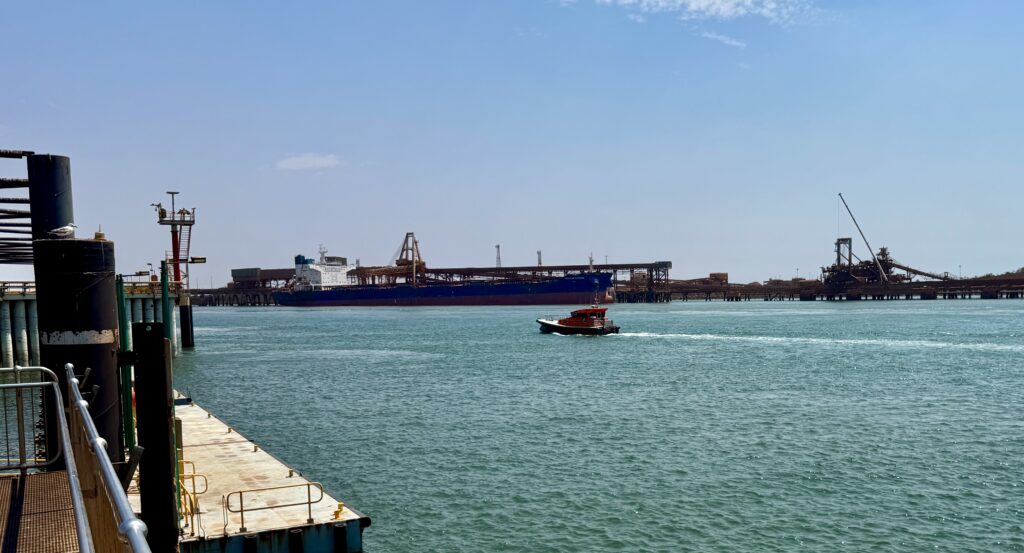
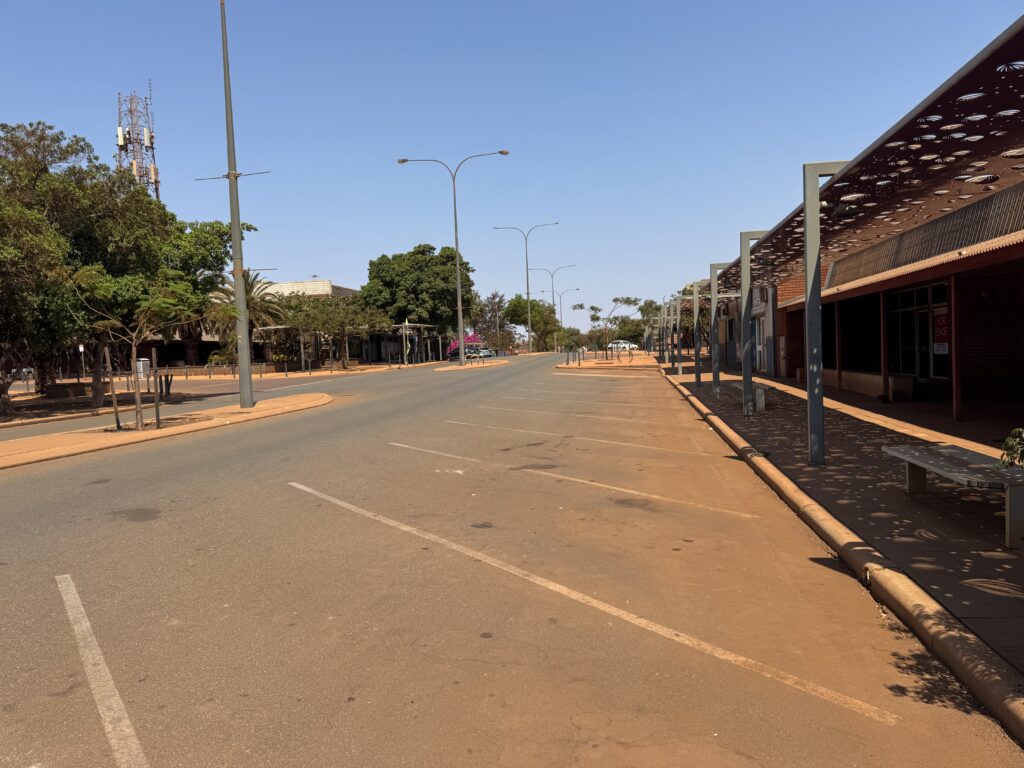
Initially planning to overnight in Port Hedland this thought rapidly evaporated when we saw what a Godforsaken place it was, the fact it was Sunday probably contributed to the deserted streets but this was clearly an unloved mining town and to think that 5 – 10% of our GDP is exported through this port seems ironic.
As a result we decided to push on the extra 200 km to Wickham where we found Richards old home which was exactly as he remembered it to be, in fact the whole town seemed locked in a time warp.
With no apparent accommodation options we drove the 12km to Port Samson which was little more than a muddy beach 40 years ago but which runs rings around Wickham (at least at high tide), where we enjoyed a well earned cleansing ale in a seaside pub and camped the night. After over 800 kms on the hot tar it was a welcome relief!

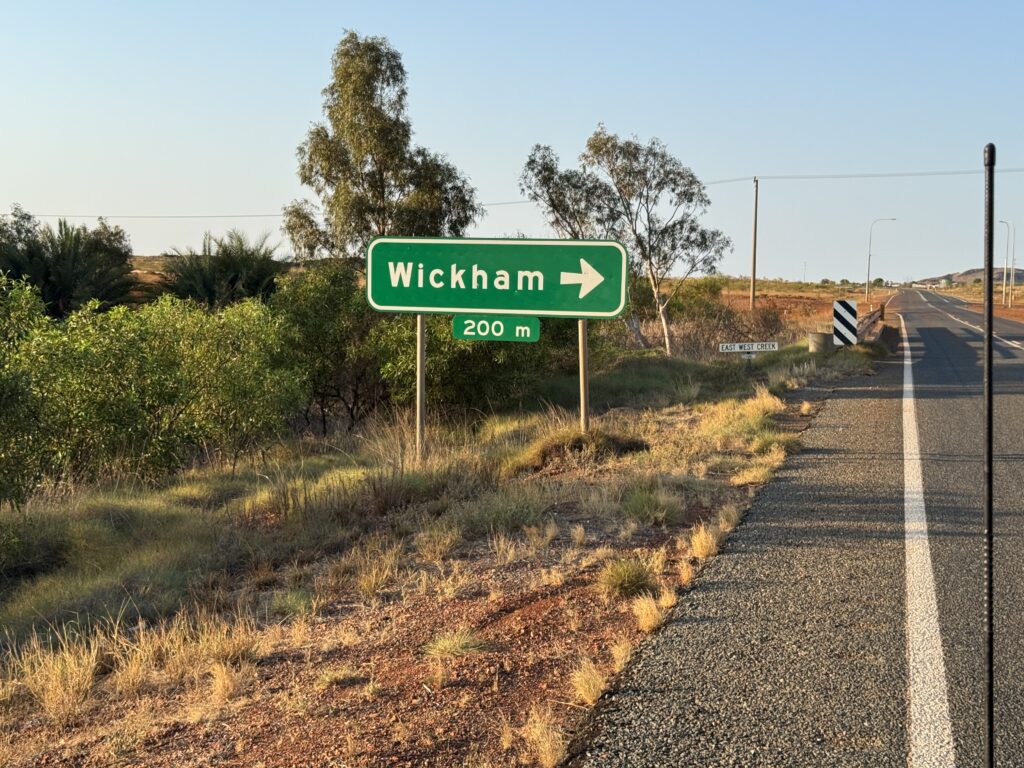

in the saddle
The next morning we headed into Karratha which surprised both of us by it’s size and apparent sophistication (a term not often used in these parts). The one thing I couldn’t understand was why it was where it was while the nearby town of Dampier is on the coast, has some reasonable beaches and a harbour while Karratha has nothing to commend it location?
Prior to leaving on this leg of my journey a number of people had recommended going to Karijini NP which is inland from Karratha in the heart of the Pilbara but to get there it seemed you had to either backtrack the 200km to Port Hedland or go the long way around via Nanutarra, either way a trip of over 800 kms and as Richard was flying out of Exmouth on Thursday I didn’t think we’d have time to go there. But as we’d effectively made up a day by not staying in Port Hedland and I’d noticed what seemed to be a much more direct route from Karratha so going there was back on the agenda. However given my recent experience and the fact the replacement tyre we had fitted in Kununurra wasn’t an off-road tyre I wanted to check the road conditions. The Visitor Information centre was closed so we went to the local Cop Shop where we were assured the more direct road was in good condition and fully sealed to where it meets the highway from Port Hedland only 50 km from the entrance to Karijini, saving us over 300 kms! Voila, let’s do it!
All was going smoothly, there was virtually no traffic, the road was great and seemed to follow the train line that led to the Pilbara iron ore mines. We were amazed at the frequency and length of the trains going back and forth beside us as we travelled through a constantly changing but always arid landscape.
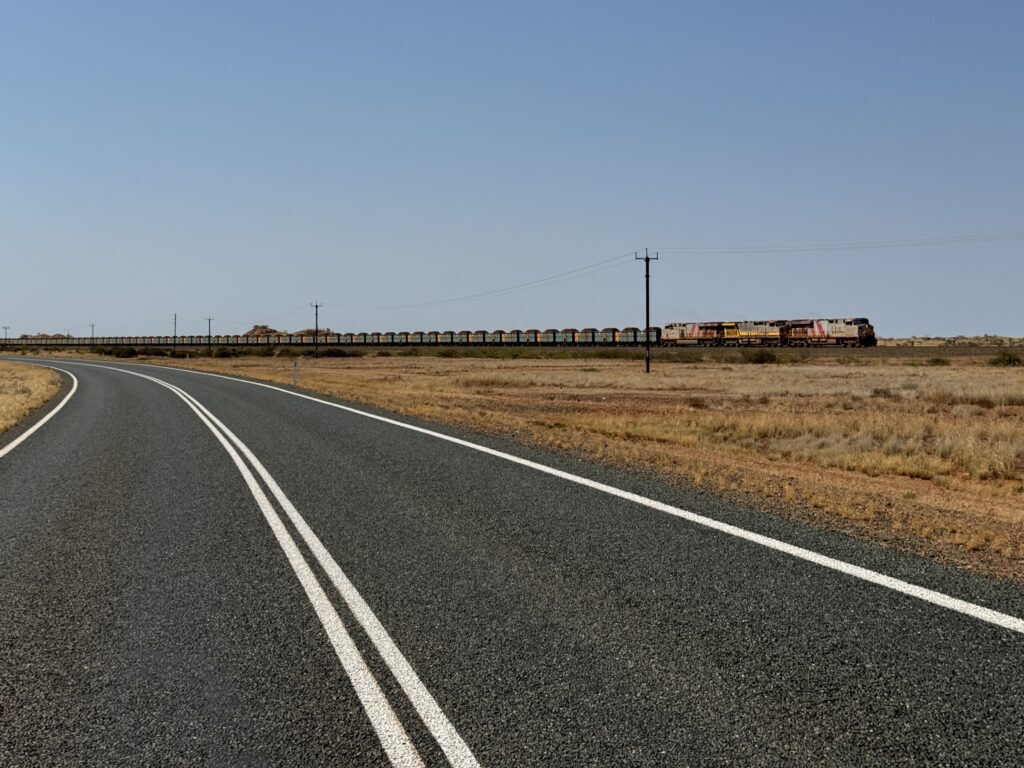
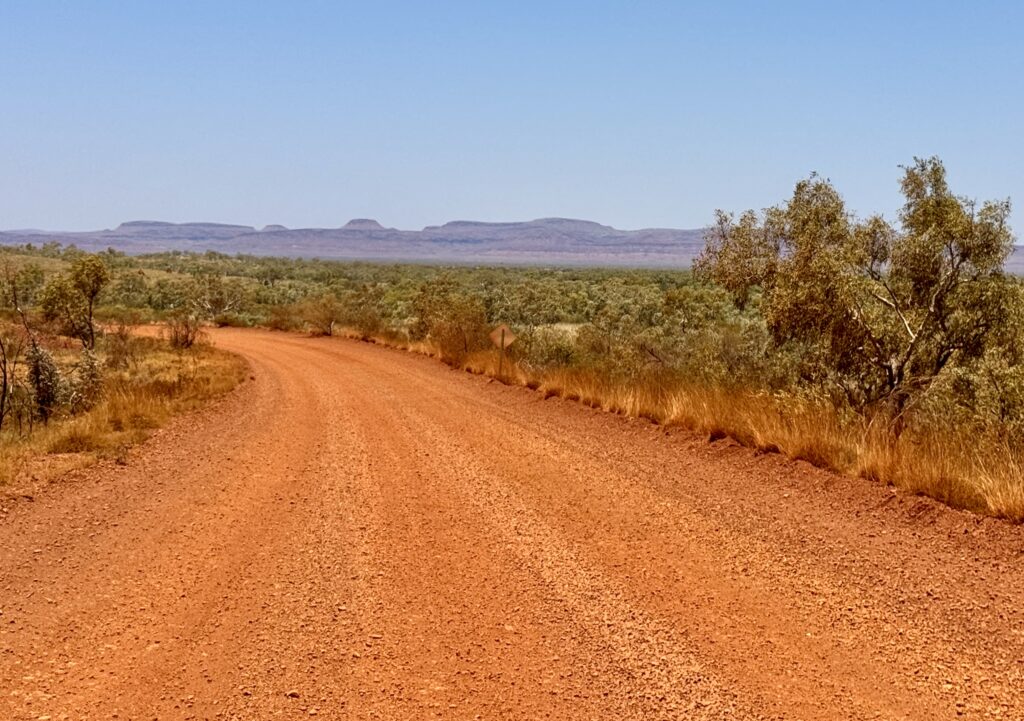
Happy days… until after around 250 kms suddenly without warning and despite what we’d been told by the cops we hit dirt! What to do? Had we missed a turn off? Should we keep going or turn back? How will the tyres hold up? Too many questions and no obvious answers, but thankfully even though the road was unpaved it didn’t seem too bad so we pushed on for about 20 minutes until we flagged down a 4X4 coming the other way. Based on their fairly negative comments we turned around and headed back from where we’d just come faced with the prospect of backtracking all the way to Karratha and forgetting all about Karijini, a 500 or 600 km waste of time and fuel! Not long after turning around we stopped another vehicle heading in the opposite direction and the driver, a miner on his way to Newman seemed much more knowledgeable and positive about the road so we turned around again and reverted to plan A, following at high speed in his cloud of dust. Despite all the conflicting advice on how best to handle corrugations I recalled my experience at Cape York and remembered there seems to be an optimum speed of around 80 – 90 kmph where the car seems to almost skip over the ups and downs all be it in this case more harshly that it would have if I’d deflated the tyres a bit, but I wasn’t expecting to hit dirt.
The further we went the more use to it we got and we seemed to be making good time as we approached the ghost town that is Wittenoom the site of one of Australia’s most disgraceful industrial OH&S disasters where mainly indigenous workers were carelessly exposed to blue asbestos with devastating consequences. A sobering reminder of travestys past, and possible portent to the future.
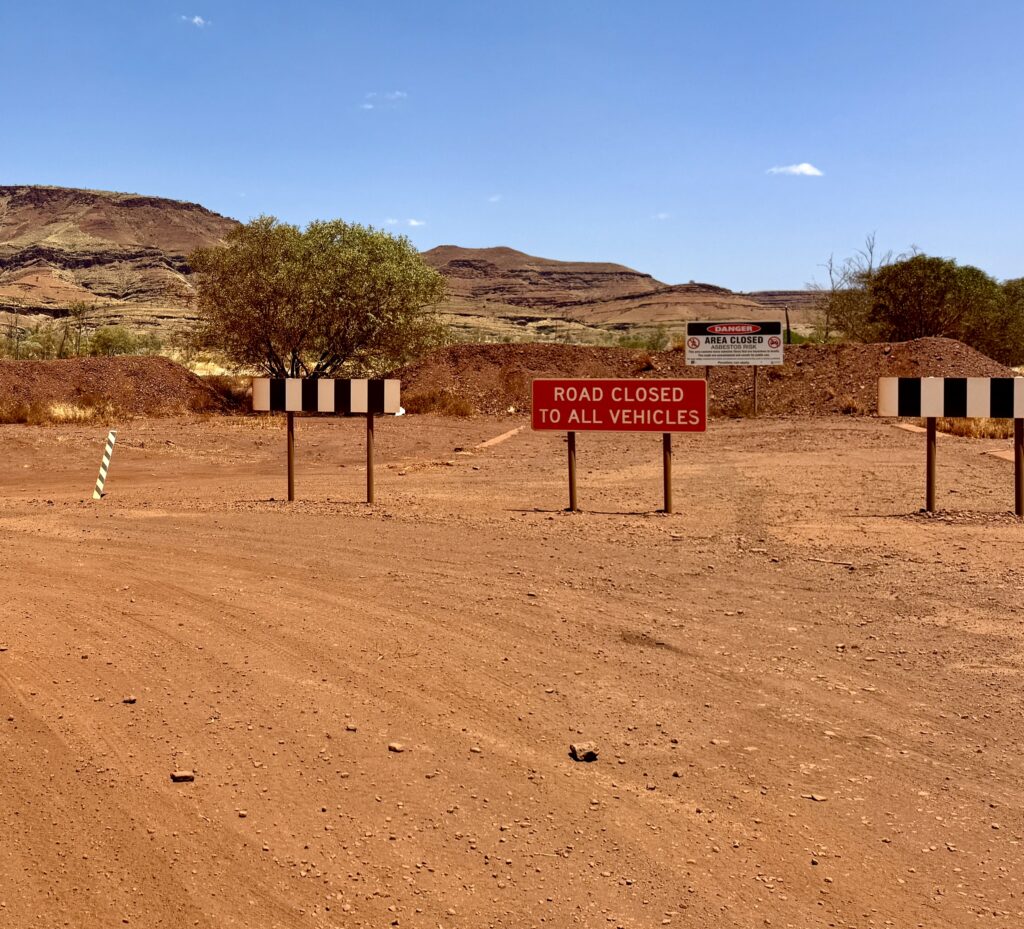
The Blue Sky Mine

we hit the black top & this happens!
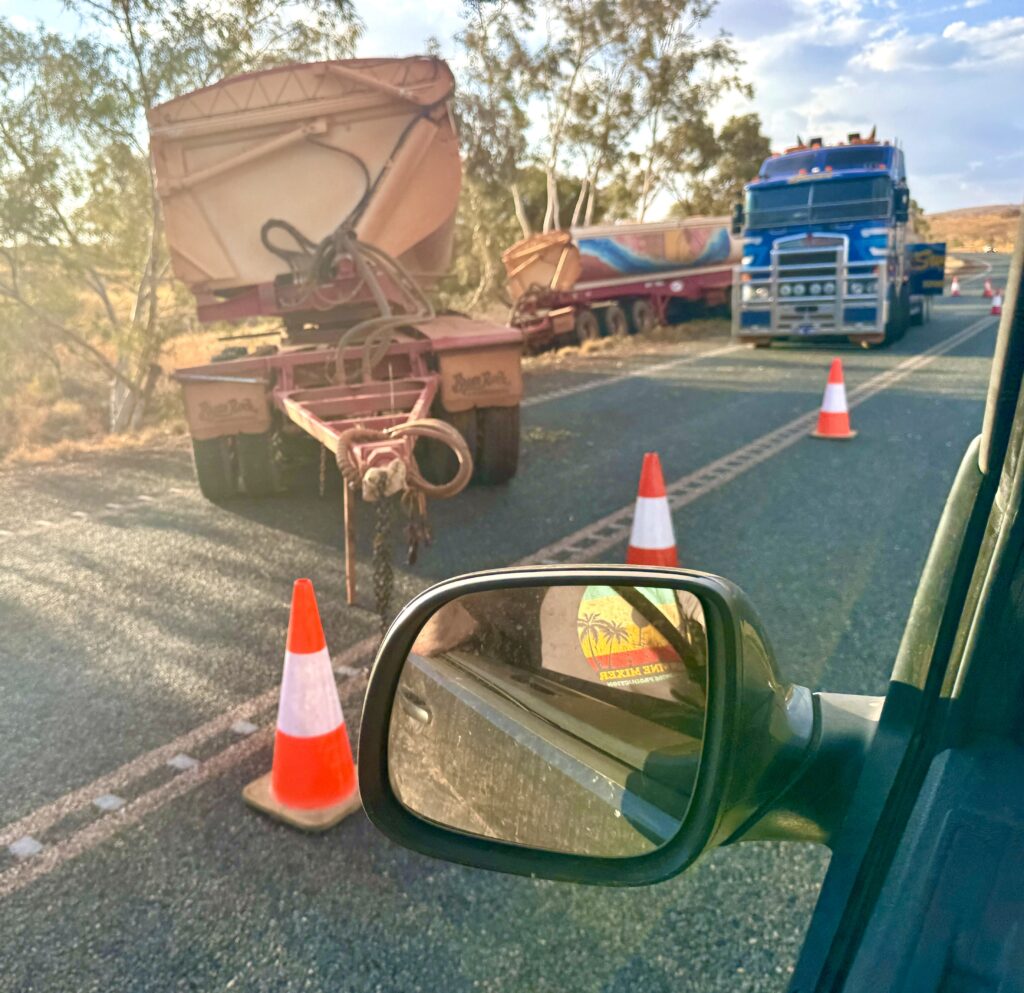
Not far past Wittenoom we unexpectedly hit the black top again, what a relief we’d made it, or so we thought. No sooner had we bitumen than I noticed a wheel wobble that quickly got worse and the van became undrivable. Bullshit, we’d travelled over 200 kms on dirt without a problem and as soon as we hit bitumen than the new tyre, the non-AT tyre we bought in Kununurra had totally delaminated! Putting my newly acquired tyre changing skills to work I put the trusty but smaller spare on and we limped into the roadhouse at Auski to consider our options.
As expected the roadhouse didn’t sell tyres but I met a Karijini Ranger who suggested I try the tyre shops in Tom Price, which I did with no luck, and to my horror they suggested Port Hedland (arrgh) but no one had Max’s size there either. Finally I tried Karratha where they had an over priced non-AT tyre like the one I’d just destroyed for $ 400, and to get there we’d either need to go back via Port Hedland (arrrgh – 850 kms) or go back on the road we’d just travelled on with a dodgy undersized tyre and no spare, both highly unattractive options! Nevertheless we started back, not sure which bad option to take when I had a last ditch idea – what about Newman, a mere 200km down the road in the wrong direction, but worth a try. I stopped the car, make the call and struck gold, yes they had a tyre the right size for $ 220 (I would have paid anything), and with a bit of luck we could get there before they closed at 5.00pm.
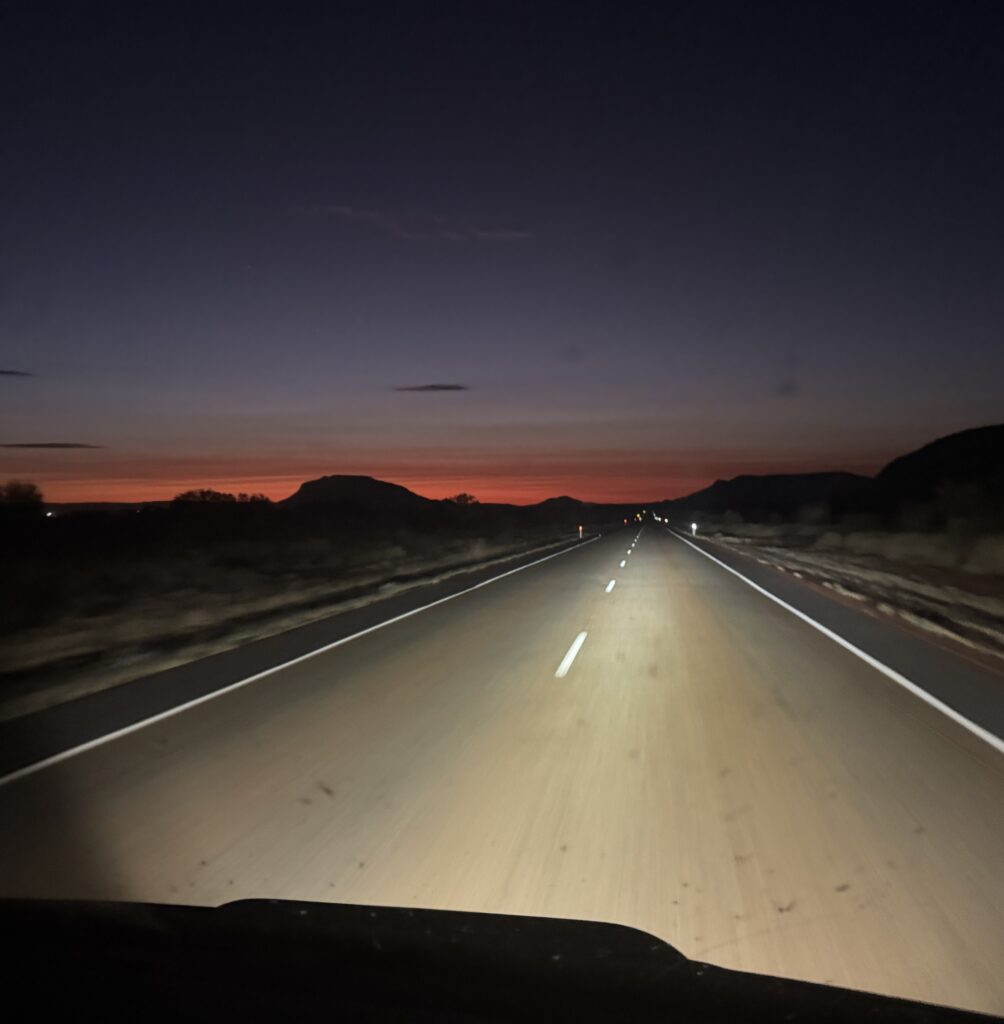
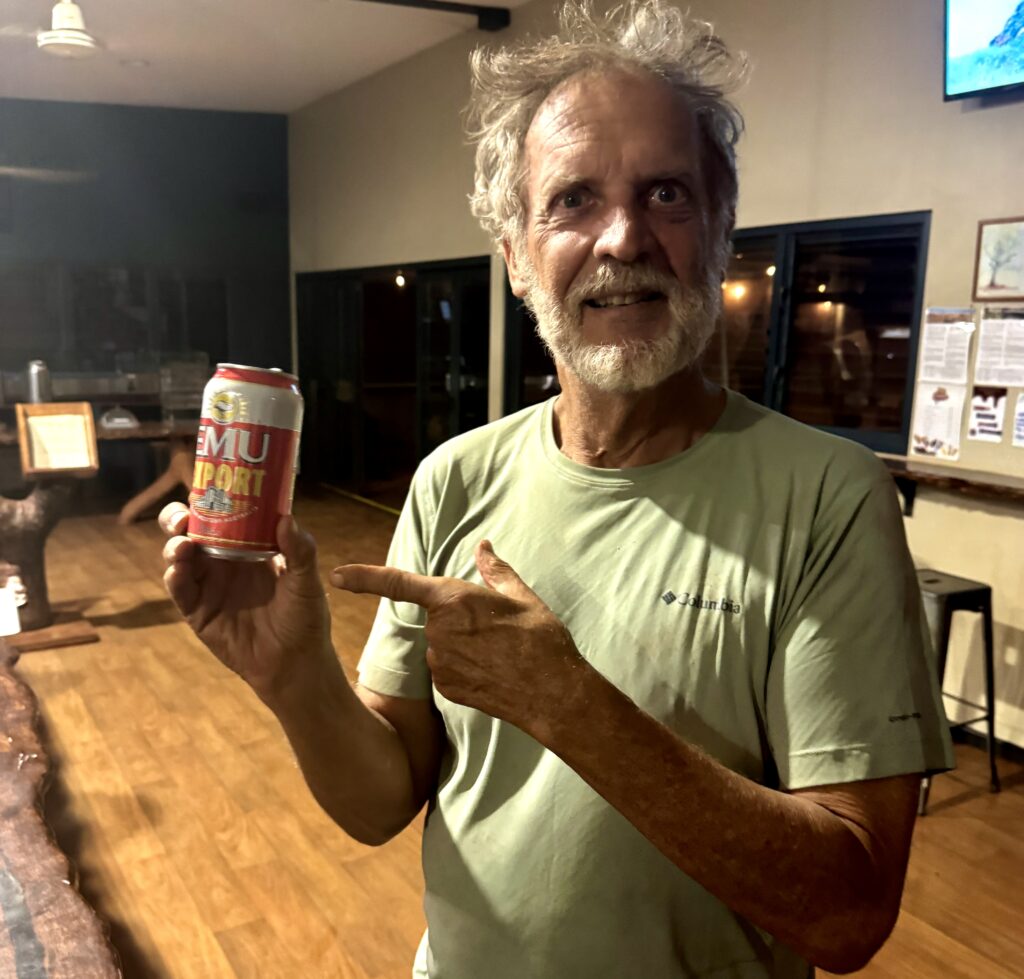
Long story short, we made it with 20 mins to spare, they fitted the tyre and we reverted to plan A, Karijini all be it about 5 hours later than planned and travelling at dusk into night in the outback is not recommended. Amazingly in the 3 hour drive we didn’t see a single animal although we did pass a road train that had come to grief, and arrived at the Karijini Eco lodge 5 minutes before they closed for the night. Allelujah, what a day but in the end, somehow, against the odds it had all worked out!
The restaurant was closed but the bar was still open so after a quick Emu we set up the swag and collapsed into bed pleasantly surprised by the mild temperature but not as happy about the waterless toilets or the bugs that were trying to eat us.

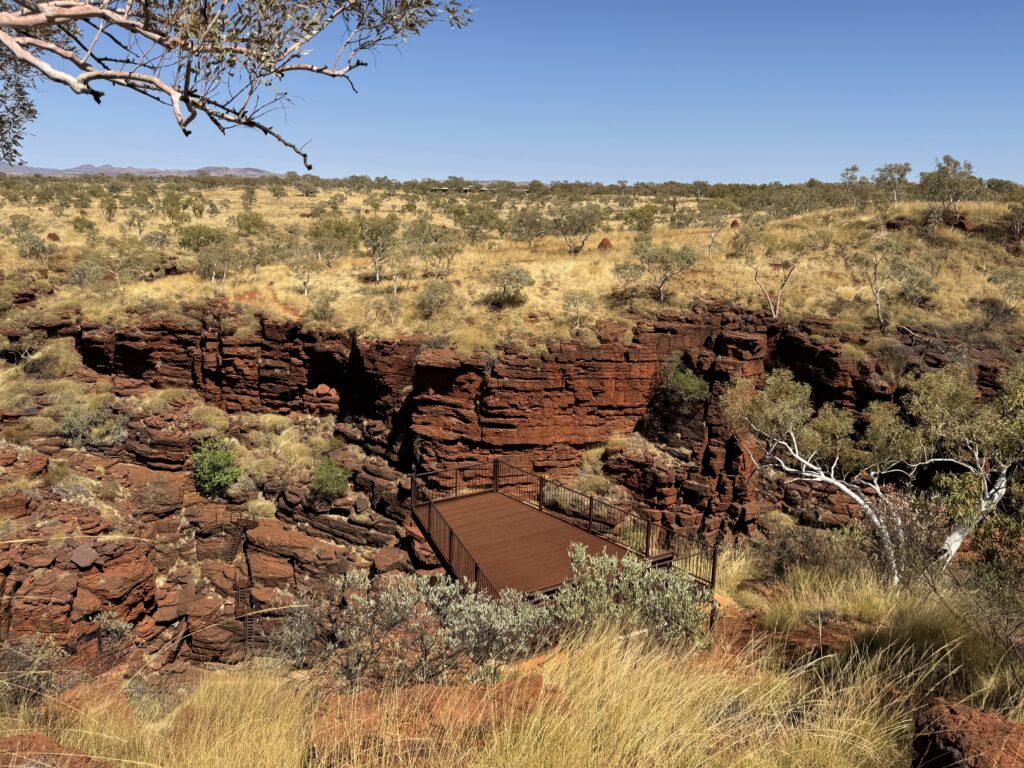


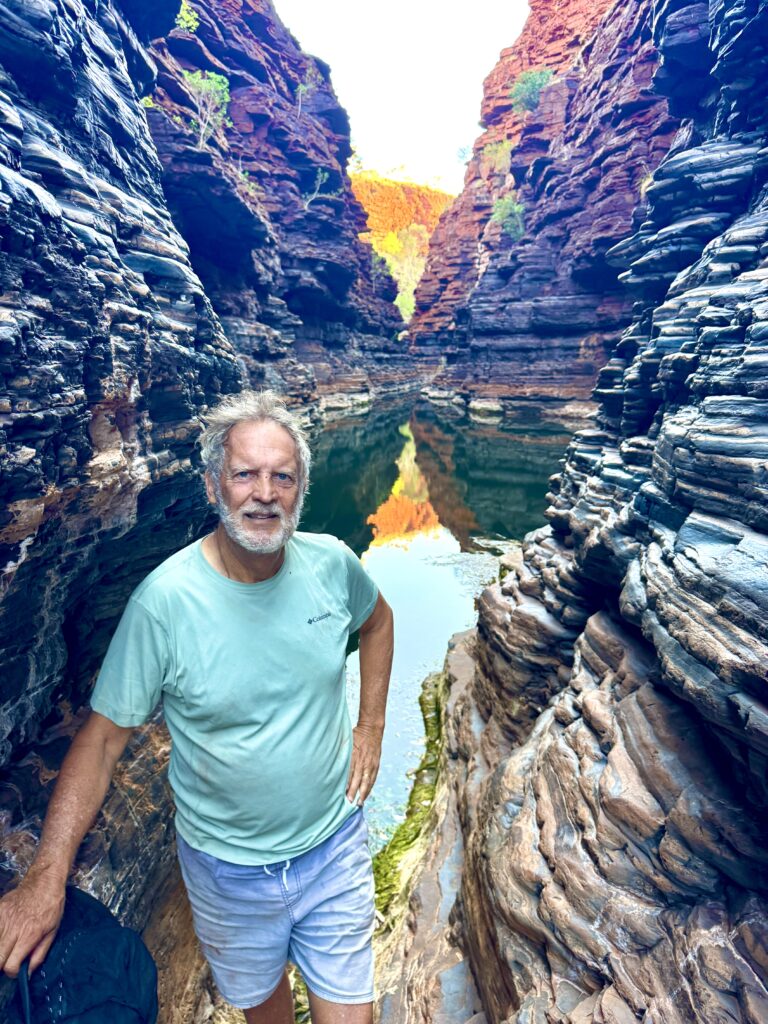
The next morning, after feeding the insects and before breakfast, we took the short walk to Joffre Gorge and were spellbound by what we found, a deep narrow gorge seemingly cut like a hot knife through butter but there was nothing soft about this landscape, an incredible demonstration of the power of water over time. Even though the gorge was virtually dry and the waterfall was not flowing the forces of nature were there to behold.
We visited several other gorges including Weano, Hancock and Knox and it was the same story, contorted rock, cool water and stunned silence.
With the dramas of the previous day fresh in our minds we decided to take the long paved route to our next destination, Coral Bay, a hot 650 kms away. There’s a shorter way via Tom Price but even though it’s about a 100 kms less it’s unpaved and takes a similar time, and we’d eaten enough dust.
It was an easy drive and Coral Bay was a revelation, turquoise water, white sand, an air conditioned room and a great meal at Billy’s. All great but somehow the brutality and earthiness of the Pilbara, and the power of Karijini had left a lasting impression.
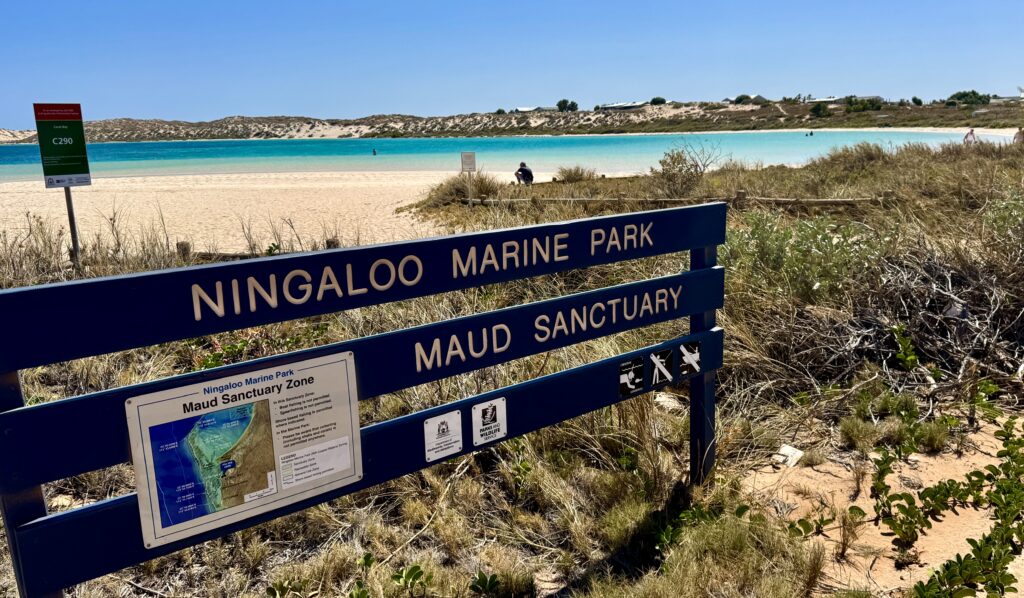
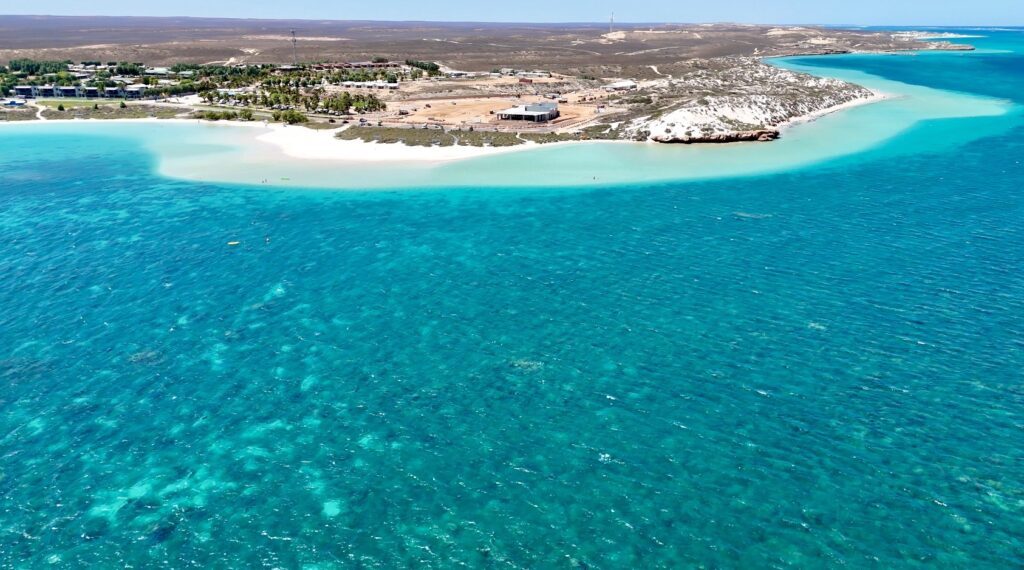
After several days of hard driving it was a relief to have time on our side and only 175 km to Exmouth.
I’d visited Exmouth about 15 years ago and my recollections weren’t great but I was amazed at how much it had developed and it just goes to show the power of the whale shark, which is now its major draw card. What had started as basically a US military base, where all cars, even the police were left hand drive has evolved into a pretty cool town – thanks to backpackers and eco-tourism.
Not only that but this was my next lighthouse, Vlamingh Head (read all about it), and Richards point of departure.
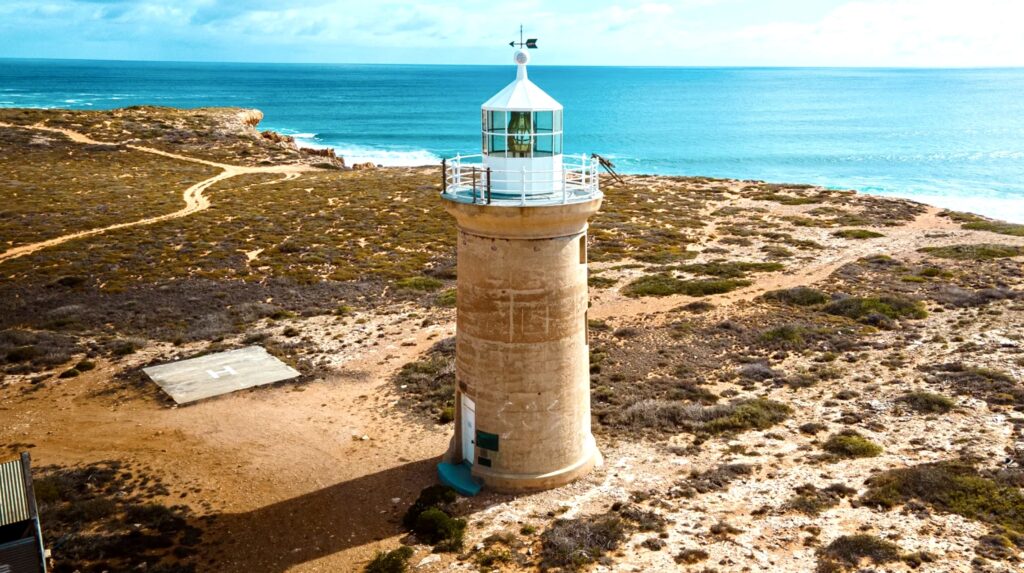


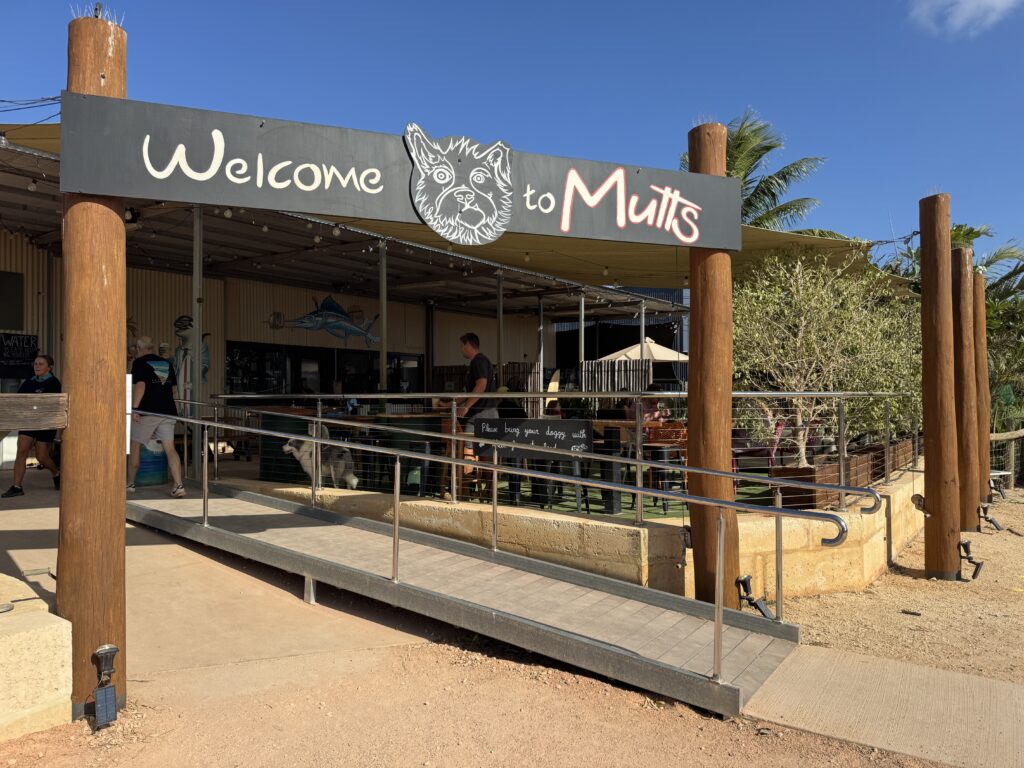
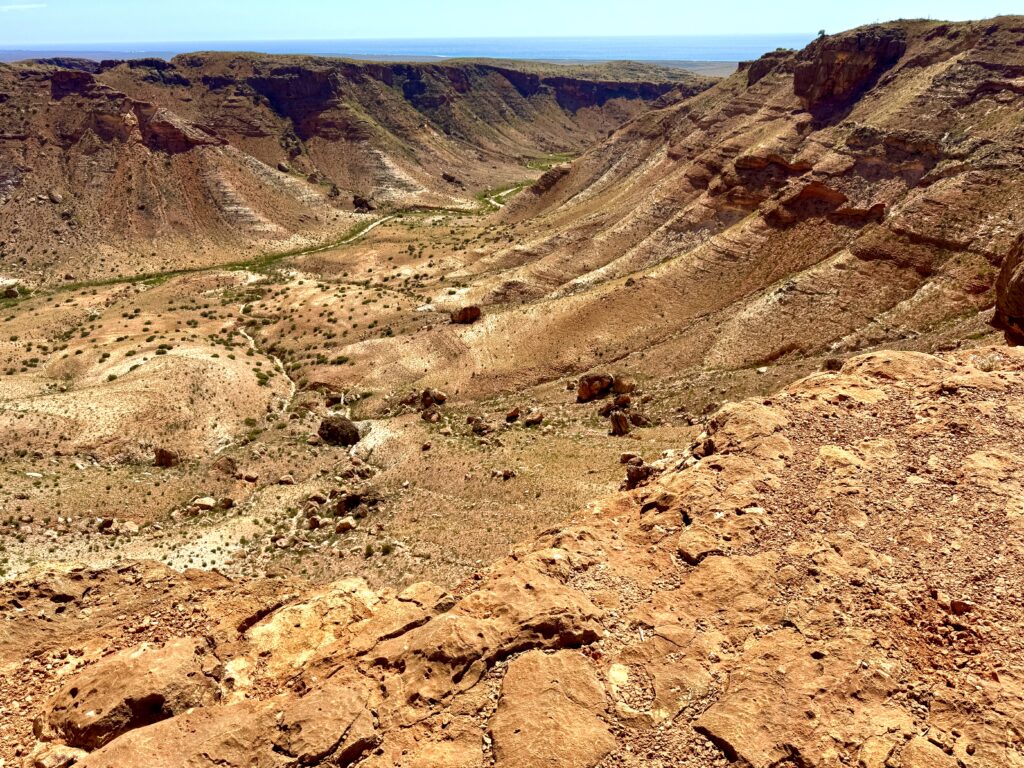
We celebrated with a great meal at King Browns Kill (actually Froth micro-brewery but we like the other name better) and breakfast at Mutts, where dogs are allowed to take their owners, and there was one last surprise on the way to drop Richard at Learmonth airport, Charles Knife canyon, had never heard of it but well worth a visit.